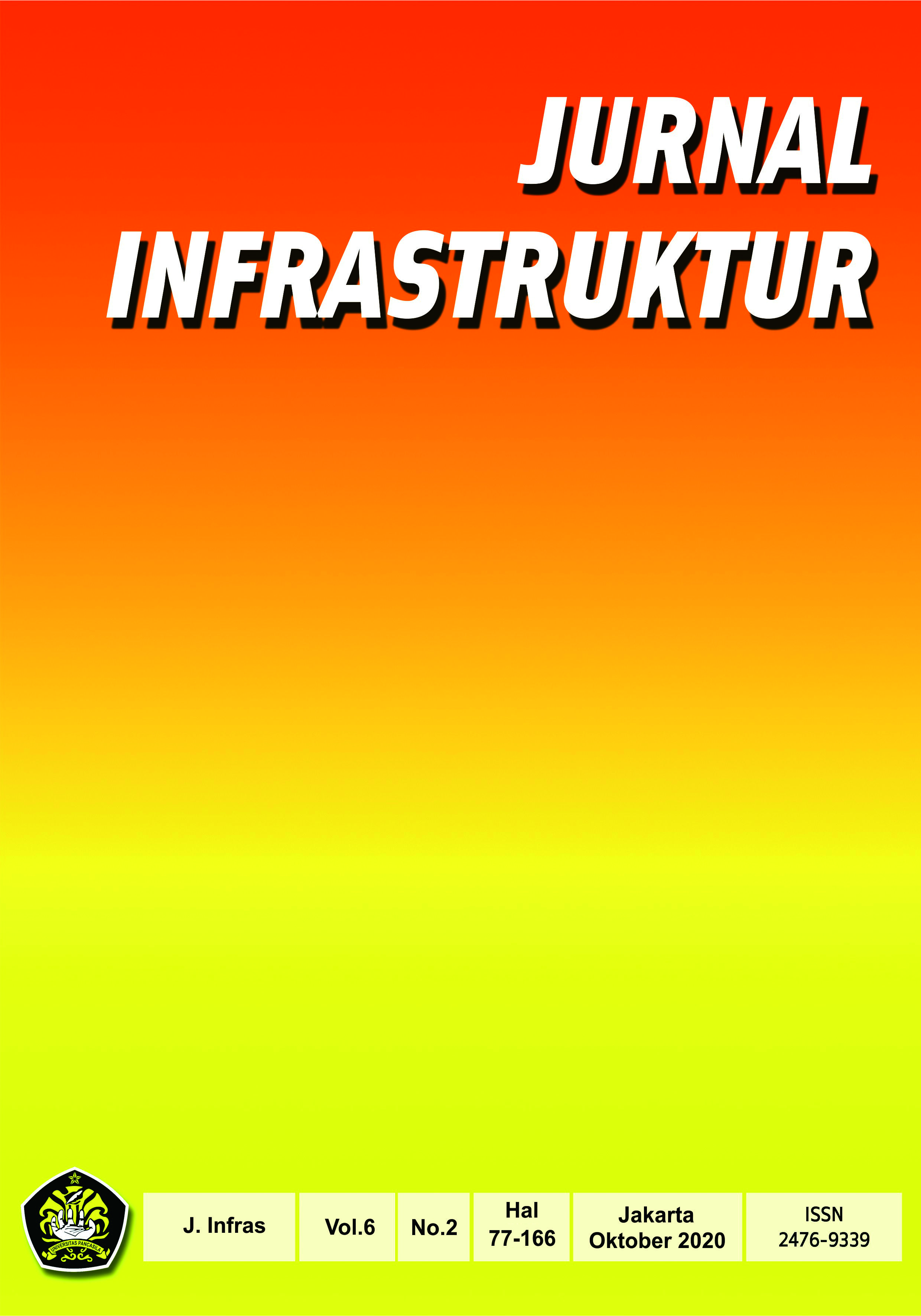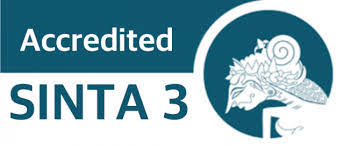EVALUASI KINERJA STRUKTUR JEMBATAN PELENGKUNG AKIBAT BEBAN GEMPA DENGAN ANALISIS RIWAYAT WAKTU
Evaluasi Kinerja Struktur Jembatan Pelengkung akibat Beban Gempa dengan Analisis Riwayat Waktu
Abstract views: 881 | pdf downloads: 889
Abstract
The behavior of the arch bridge structure has its own peculiarities in distributing loading. The curved shape of the structure allows the structure's own weight to be transferred to the foundation as the normal compressive force without bending. the load is transferred through the semicircular structure to the abutments on either side. The curved (semicircular) design will naturally shift the load received by the floor of the bridge vehicle towards the abutment which keeps both sides of the bridge from moving sideways. Earthquake is a dominant horizontal cyclic loading of a structure. The performance of bridge structures due to the effects of earthquake loading is an important aspect that needs to be taken into account in designing and evaluating the bridge structure. The method used in this study is time history analysis. This article aims to evaluate the performance of arch bridge structures due to earthquake loads by using time-history analysis method. The results of the structure performance show that. The performance of the bridge due to the loading of the Loma prieta earthquake is generated from the period scale that has been analyzed with the 10 second period of the first earthquake for each result. Based on the results of Midas analysis, the strongest location where the damage occurs is in the middle of the bridge road. At the coordinates of 19 the largest displacement is at joint 268 of 1.177169 mm and for U2 of 0.0194 mm and U3 of 31.763771 mm.
References
A. C. Neves, I. González, J. Leander, and R. Karoumi. (2017).Structural health monitoring of bridges: a model-free ANN-based approach to damage detection. J. Civ. Struct. Heal. Monit., vol. 7, no. 5, pp. 689–702, Nov.
Apriani, W, S. W. Megasari, W. Alrisa, and P. Loka. (2018). Penilaian Jembatan Rangka Baja Transfield Australia Dengan Metode Fracture Critical Member ( Studi Kasus : Jembatan Siak 2 Pekanbaru ). no. September, pp. 18–19.
J.-J. Lee and C.-B. Yun. (2008). Damage localization for bridges using probabilistic neural networks. KSCE J. Civ. Eng., vol. 11, no. 2, pp. 111–120.
Nur Rizqi, M. (2017). Pengaruh Gempa terhadap Perilaku Jembatan Pelengkung Sultan Muhammad Ali Abdul Jalil Muazzamyah dengan Time History Analisis. Publikasi Tugas Akhir Universitas Brawijaya Malang.
R. Suryanita. (2015) “Prediksi Kerusakan Model Jembatan Beton Bertulang Berdasarkan Mutu Beton dengan Metode Jaringan Saraf Tiruan,” no. November, pp. 368–375.
M. Lydon, S. E. Taylor, D. Robinson, A. Mufti, and E. J. O. Brien. (2016). Recent developments in bridge weigh in motion (B-WIM). J. Civ. Struct. Heal. Monit., vol. 6, no. 1, pp. 69–8.
S. Kim. (2008). Experimental investigation of local damage detection on a 1/15 scale model of a suspension bridge deck. KSCE J. Civ. Eng., vol. 7, no. 4, pp. 461–468.
S. Tohidi and Y. Sharifi. (2016). A new predictive model for restrained distortional buckling strength of half-through bridge girders using artificial neural network. KSCE J. Civ. Eng., vol. 20, no. 4, pp. 1392–1403.
Tim SNI (2019). Tata Cara Tata Cara Perencanaan Ketahanan Gempa untuk Struktur Bangunan Gedung dan Nongedung SNI-03-1726-2019
W. F. Darmawan, R. Suryanita, and Z. Djauhari, (2017). Evaluasi Kesehatan Struktur Bangunan berdasarkan Respon Dinamik Berbasiskan Data Akselerometer. Media Komun. Tek. Sipil, vol. 23, no. 2, p. 142, 2.
Z. Chen, X. Zhou, X. Wang, L. Dong, and Y. Qian,(2017). Deployment of a smart structural health monitoring system for long-span arch bridges: A review and a case study. Sensors (Switzerland), vol. 17, no. 9.
Copyright (c) 2020 Jurnal Infrastruktur

This work is licensed under a Creative Commons Attribution-NonCommercial-ShareAlike 4.0 International License.














